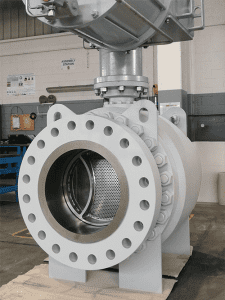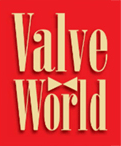In this article, IMI explains how a new valve design helped improve safety and increase gas output for an LNG manufacturing facility.
Text & images by IMI Process Automation
The challenge
 The liquefaction of natural gas is performed to reduce volume, making it easier and more affordable for companies to transport products in quantities that would otherwise be impractical in a gaseous state.
The liquefaction of natural gas is performed to reduce volume, making it easier and more affordable for companies to transport products in quantities that would otherwise be impractical in a gaseous state.
The LNG industry has developed rapidly over the last five decades and now accounts for a significant portion of the global energy market. However, LNG production places significant demands on valves and pipework, a problem an LNG facility in the Americas had been grappling with for some time before working with IMI.
An LNG manufacturing facility based near the coast, in Point Fortin, Trinidad operates four liquefaction trains. With a total capacity of approximately 115 million tonnes of LNG per year, it is among the largest facilities of its kind in the world.
In 2022, the site team approached IMI to address the criticality of its feed gas flow control valves. The feed gas line was already sized at 24 inches, while the flow control valve on the datasheet, specified as a linear motion globe valve, should have been 36 inches to accommodate valve flow coefficient (Cv) requirements.
The solution
In response, the IMI team worked on a new valve design to improve safety and increase total gas output. To maximise the valve’s Cv, the IMI team suggested a quarter-turn ball valve with an inherently higher flow capacity and the addition of a customised multi-stage trim design. The design was based on the IMI’s patented DRAG™ technology – a solution first developed by the company in the 1960s to control high-pressure drops. The company called this valve the dBX Shield, owing to its ability to manage and minimise flow control issues.
Modulating valves for feed gas applications work well with multi-stage trim, making them an ideal application for the introduction of DRAG™. Adding it to a quarter-turn trunnion-mounted ball valve was considered a new approach at the time of development, allowing for consistent space and weight reduction compared to traditional solutions, as well as better sealing performance when closed.
Over the years, this novel valve design has gained momentum and has been further improved with the introduction of new manufacturing techniques. The DRAG™ element, for instance, was optimised with the introduction of additive manufacturing, making it easier to make incremental design improvements without having to modify the overall valve design.
The LNG facility conducts regular inspections to identify and eliminate asset integrity issues stemming from installed assets. This is what led it to move from its existing linear valves to a single dBX Shield, predicting that it would improve plant efficiency, tackle on-site noise and secure higher yields.
The benefits
There has been a marked improvement since the site upgraded its train two-feed gas line valve to a dBX valve, with considerably lower noise stemming from valve movements during production.
Production has also improved. The dBX valve has a higher flow coefficient compared to linear valve designs, allowing the company to process a high gas flow rate to the plant. As opposed to linear valve movement, quarter-turn valves are also capable of minimising fugitive emissions, in turn making the site more productive and sustainable.


